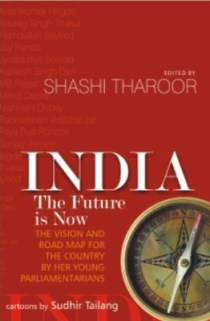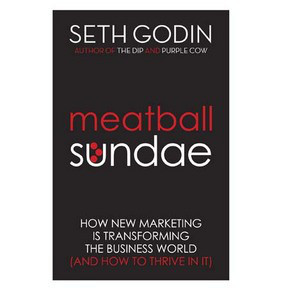Raj Shankar's Blog, page 40
September 1, 2013
My tryst with Kashmir
Recently I got an opportunity to conduct a faculty development  program on Entrepreneurship. The place J&K EDI – Srinagar. Initial reactions from everyone at my side were: Is it necessary for you to go? What about safety? Will there be others? How sure are you that you won’t be alone? and so on.. Discussions and queries were more around the anxieties than the program design. I would be lying if I said these did not affect me to reconsider the decision to go atleast a couple of times. However, the passion to teach enhanced this time by the intrigue surrounding the place, made me accept the opportunity.
program on Entrepreneurship. The place J&K EDI – Srinagar. Initial reactions from everyone at my side were: Is it necessary for you to go? What about safety? Will there be others? How sure are you that you won’t be alone? and so on.. Discussions and queries were more around the anxieties than the program design. I would be lying if I said these did not affect me to reconsider the decision to go atleast a couple of times. However, the passion to teach enhanced this time by the intrigue surrounding the place, made me accept the opportunity.
How many would actually attend a training program that too on Entrepreneurship, and how enthusiastic that handful of people would be, how prepared must I be to do justice to the program were all the thoughts that I had as I embarked on my travel. But many of these thoughts were themselves questioned when I boarded the Mumbai –Srinagar flight. Where I was expecting a handful of travellers, I encountered a full flight. And a flight filled with not just business people who take risk for their livelihood, or government officials who have little choice; but a flight filled with families – happy families who were staying there. The flight was noisy with chatter and prattle the way any other busy sector would be. The first questions that the anxieties around the travel could be much hyped crept into me at that moment.
This was just sealed and all queries we all had about the place vanished the minute I stepped out of the airport. The first sight that greeted me on the streets of Srinagar was that of couple of school vans filled with children returning home. This scene could have been from any other small city in India, barring the military presence. As I drove down to the place of stay, I encountered many familiar sights. Despite the army, I found a sense of tranquillity descend on me due to the fresh air, lovely mountains, simple folks and warmth that I was able to sense. As I sat down with a cup of steaming tea in the guest house looking at the mountains far away, I began to question the very source of the fears and doubts that were there on the place, people and training. I realised it was from what I was hearing and reading.
How many times have I or others around me set out to know more about this part of India for ourselves? How many times have I or others willingly offered to understand what is happening in the valley and what one can do to bring relief to the situation? How many times have I viewed Kashmir as a place other than one that is under dispute? How many times have I viewed Kashmir the way I would view any other city in India?
And then slowly the doubts, the questions and the fears in my mind about the place, people and training were replaced by hopes and expectations, just the way it would before any other training. And this week, I will share with you my experiences there – so that you can see Kashmir the way I saw it. So that you can experience Kashmir – the way I experienced it. A way that is different and at times diametrically opposite to what we read and hear!
To give you an idea, after the training, I cannot wait to get back for another interaction with this beautiful place and with these wonderful people!


August 31, 2013
Interesting Links This Week: 01-September-2013
From teaching to making money to getting found – the links that topped my reading this week:
Can you imagine running a USD 16 million company from home?  These days technology is making it possible. Here is an inspiring story of a woman who is doing exactly that! She is not only doing it for herself but through her company she is making something similar happen for others as well. Think! Link: http://bit.ly/18HQp3O
These days technology is making it possible. Here is an inspiring story of a woman who is doing exactly that! She is not only doing it for herself but through her company she is making something similar happen for others as well. Think! Link: http://bit.ly/18HQp3O
If content is not searchable then its not of much use. Most of the readers of your content come searching for it. So will apps make content based websites redundant – doesn’t seem so! It looks like people still prefer to read freely online choosing what they want to and what they can easily share. Here are some thoughts from a long time practitioner. Link: http://bit.ly/1flne8L
Today’s new ventures are increasing ‘Born Global’ according to HBS Professor William Kerr. This article highlights how he went about creating a course from scratch and what he thinks are the key things to be taught in a course like this. Interesting for entrepreneurs and entrepreneurship faculty alike. Link: http://hbswk.hbs.edu/item/7324.html


August 30, 2013
Books and Me: India, The Future is Now
Book Title: India, The Future is Now
Author: (Edited by) Sashi Tharoor
What made me pick this book – was a short statement below the subtitle “The vision and road map for the country by the young parliamentarians.”
Reading the book was eye opening with respect to the developments as well as the challenges that India faces today. With 66% of our population aged below thirty five years, more than 600 million people still engaged in agriculture, what India needs today is greater inclusivity in growth. This requires a healthy combination of economic development and social justice. The book contains essays by twelve of India’s youngest parliamentarians.
They are Anantkumar Hegde, Anurag Singh Thakur, Hamdullah Sayeed, Jay Panda, Jyotiraditya Scindia, Kalikesh Singh Deo, M B Rajesh, Milind Deora, Nishikant Dubey, Poonamben Veljibhai Jat, Priya Dutt Roncon and Sanjay Jaiswal. Each of them have provided perspectives on a variety of issues related to agriculture, healthcare, infrastructure, cyber security, education, poverty, technology and how each of these can be handled or overcome with the right vision, policy and execution.
These young parliamentarian come from nook and corners of the country and hence represent diverse regions, culture and languages. While some of them are second and even third generation politicians, there are also first generation politicians who have risen from the grass root ranks. They are also representative of the ideologies of major national parties in India. While all of the believe that inclusivity is important for India’s national good, each of them provide a specific tool to help achieve the desired development. All of them are well educated, well exposed to worldly developments and have represented India on more than one occasion at international platforms. The innumerable sources that is referred across the essays shows the amount of data availability to make good decisions. Most of them seem to agree on the fundamental challenges that India faces. It is very interesting to note that the new breed of politicians, specially the younger representatives have a sense of responsibility, a fresh set of ideas and have the will to turn them into action. The book is beyond mere political prattle and is one that is filled with practical perspectives on India’s pressing problems.
This book should probably be read by the large population of the educated masses. More parliamentarians should share their thoughts with the people. As I end this review I am also wondering if it would be a great idea for some of our forward looking parliamentarians to crowd source solution for many of India’s challenges using technology such as blogs, bulletin boards etc. I am sure that day is not too far!


August 29, 2013
What’s Your Cause?
When it rains, the homeless struggle to even stay dry. On a normal  day a few millions go without food. Every year, millions of children turn malnourished across the world. With increasing number of vehicle owners and advancement of science, parking, pollution and urban infrastructure are bigger challenges than before. Poverty, corruption, safety, health, orphans, dying languages, near extinction species amongst others are all causes. Is one cause more important than the other? Who is to decide?
day a few millions go without food. Every year, millions of children turn malnourished across the world. With increasing number of vehicle owners and advancement of science, parking, pollution and urban infrastructure are bigger challenges than before. Poverty, corruption, safety, health, orphans, dying languages, near extinction species amongst others are all causes. Is one cause more important than the other? Who is to decide?
Have any of these causes not existed in the past? Has somebody in the past not worked to eliminate them? Then, is it that no causes have been eliminated ever in the past? There is no absolute yes or an absolute no to any of these. While some causes have been taken up and resolved (milk shortage) by people who cared for them (Kurien), most causes never seemed to have been taken to a logical end even in the limited context. Why is this?
In today’s world with communication becoming easier than ever and rallying support for causes more possible than before, it is important for each one of us to choose the cause that we care about the most. No one person can handle and take up all the causes. Every individual gets impacted by some cause and they must take extreme interest to channel the concern towards that cause to help resolve it. Every individual who feels concern for a similar cause genuinely and whole heartedly will commit themselves and join hands naturally.
When should one exhibit concern and for which cause is very personal. All causes are important, and all causes need resolution. In our limited and short lives let us take up any one cause that we feel closely connected with, resonate with and attempt to resolve along with others who are on that journey.
Don’t compare causes and spend energy convincing whose cause is bigger. Spend that energy in resolving your cause a bit more. Choose yours now – it is waiting for you!


August 28, 2013
How to send invitation on LinkedIN?
With the business environment fairly grim, and the job market hitting  new bottom every day, people are beginning to make use of social media networks more intensely. I make it a point to share in every talk and workshop to faculty, entrepreneurs as well as students that you must dig your well before you are thirsty. Sadly most of us don’t give it the relevant importance. You start searching for water, only after getting thirsty. When it is really a bit too late. And there are too many people vying for it.
new bottom every day, people are beginning to make use of social media networks more intensely. I make it a point to share in every talk and workshop to faculty, entrepreneurs as well as students that you must dig your well before you are thirsty. Sadly most of us don’t give it the relevant importance. You start searching for water, only after getting thirsty. When it is really a bit too late. And there are too many people vying for it.
One of the more popular and effective online professional networking tool available to all of us is LinkedIn.With the increase in number of people using LinkedIn it is not surprising to receive/send a handful of requests every day. Most of the invitations have the standard default message provided by the system. This is my opinion is the coldest way to request a connection,. While such invitations are fine when sent to family and close friends, it does not help in making new connections. The message portion of the invitation is a great way to make a first impression. Any note that you put there makes you different from most others. If you can add a quick reason for connecting, it makes it sweeter.
While the message that you write as a part of a LinkedIn invitation has a limit on the number of characters, it is large enough to let the other person know why you are attempting to connect. If you have met the person earlier, a reference to that meeting can help establish context. If you have been acquainted to the person’s work or activity a reference makes the connection easy and possible. If you intend to create a connection because of a common cause or interest, mentioning it helps make the connection. If you have no reason why you are connecting other than increasing your list of connections, you will be better off not sending the invite.
There are innumerable resources available online that provides tips and techniques for using LinkedIn effectively. While I do recommend keeping up with the changes happening on LinkedIn and learning to use it better, the act of sending that first invitation to connect is in my opinion the most essential. If first impressions matter and well begun is half done then learning how to send a LinkedIn invitation is probably the most important activity to learn and do on LinkedIn. Happy connecting!


August 27, 2013
Vedantic Wednesday: Attachment, the formidable foe
While Vedanta proclaims that attachments stop us from evolution and attaining state of god hood, attachments impact us significantly even in our worldly pursuits. Like a toy car that has to be pulled back and released to move forward, we need to move back, let go to scale greater heights.
attaining state of god hood, attachments impact us significantly even in our worldly pursuits. Like a toy car that has to be pulled back and released to move forward, we need to move back, let go to scale greater heights.
A lot of companies spend time and money in generating products and ideas. Apart from the resources spent, a lot of executive time and emotional energy is also invested. Even when the product displays little chances of success the company is not willing to let go. It holds on under the pretext of salvaging sunk cost. But what is it that is making them hold on to a non-revenue generating asset? What is making them stick to decisions that are so obviously wrong? Isn’t it an underlying emotional attachment – to the product, to their earlier decision, to their own image?
Attachment also comes in the way of individual achievements. Very often under the guise of commitment and attachment we do not take steps required for us to move towards our set goals. But the constant thought of the missed achievement creates an underlying feeling of compromised living. For the choice we have made is not based on our intellectual assessment of our situation, priorities and goals. It is a choice taken in an emotional state – born out of a misplaced sense of attachment. And because it is not a well thought decision, it haunts us and makes us feel incomplete, frustrated, suffocated and chained.
This is also the reason why you find entrepreneurs starting off by taking large risks but very quickly settling down with reduced entrepreneurial spirit to safeguard their worldly success. Only those who are willing to risk all that they have created in the past, scale greater heights.
In simpler terms attachment is the sense of safety of the past. We feel attached to what we have seen, what we have, what we have gained and what we have achieved. When we get too attached, we fail to see the possibilities that exist in front of us for the fear of losing the objects of our attachment.
Even if we don’t go all the way in understanding attachment from the view point of Vedanta, lets us take a small step to understand the way it affects us at the worldly level!


August 26, 2013
Did You Revisit Your Strategy?
The rupee is tumbling. Trade deficits are widening. There is a greater call for local protection through trade barriers and other softer controls. Cash flow remains a concern. Raising money (quality money) is getting tougher. Long term research and development, organization development and strategic initiatives are all being shelved and postponed. While many of these responses have been tactical efforts to handle the short term pressure and medium term impact on surviving the turbulence, most enterprises atleast the emerging ones and small businesses don’t seem to have revisited their strategies. Strategy is a tool that helps a company aspire correctly, reassess the context, align resources and enables the company thrive. While strategy is not making documents, it is definitely not dreaming either. It is about making choices within the context in which the business operates. As the context changes the strategy needs revisit.
call for local protection through trade barriers and other softer controls. Cash flow remains a concern. Raising money (quality money) is getting tougher. Long term research and development, organization development and strategic initiatives are all being shelved and postponed. While many of these responses have been tactical efforts to handle the short term pressure and medium term impact on surviving the turbulence, most enterprises atleast the emerging ones and small businesses don’t seem to have revisited their strategies. Strategy is a tool that helps a company aspire correctly, reassess the context, align resources and enables the company thrive. While strategy is not making documents, it is definitely not dreaming either. It is about making choices within the context in which the business operates. As the context changes the strategy needs revisit.
During the last few months, most of my speaking requests from corporate as well as industry associations have been on the topic of growth and strategy. But the number of people who turn up for strategy related talk with interest and belief are very few. However with those who turn up, I have been having very interesting discussions and thought share. A handful of CEOs and entrepreneurs of emerging businesses are slowly beginning to understand what strategy is and how to utilize it to make their organizations healthier and perform better. This is a slow but a welcome change!
As I head out today to one more institution to kick start their strategy process, I am excited at the possibility of moving one more organization beyond their self imposed boundaries. After all turbulence creates an equal number of opportunities for entrepreneurs to leverage.


August 25, 2013
The Sheen and the Shallow
How many times have you sat through presentations and wondered  “Good Presentation! Bad Content!” Very rarely do we walk out saying the reverse. Why is it so?
“Good Presentation! Bad Content!” Very rarely do we walk out saying the reverse. Why is it so?
The emphasis on packaging, design, user interface, image and perception are all being hailed as the most important aspects in any product. Rightly So! Why would you even be attracted to a bad looking product in the first place? But the point we missed while gaining this learning was that packaging becomes important after creation of a great product. Be it an individual, product or service, packaging can only gain initial attention. But the reason why people come back, refer back and contact back is because of what’s inside.Apple products are ‘Cool’ and attractive. But the systems inside also perform meticulously as expected.
The irrationally placed importance on packaging has reduced the importance of efforts placed on the content. People spend more time dressing themselves up , learning flamboyant words and finding the latest presentation software than spending time on the content being presented. While I do not deny the importance of packaging, I think it is very important to focus on the content. This is because the packaging is fleeting, while the content remains – the packaging is thrown away but the content is retained.
However ‘Cool’ a chocolate box is – you still buy it (definitely the second time) for the chocolate. Think about it!


August 24, 2013
Interesting Links This Week: 25-Aug-2013
Are you sleeping less than needed? Are you having drowsy days? Are you taking too much caffeine to keep you  awake? Here are 7 habits for entrepreneurs to pick that can help get a good night’s sleep. It is so much a part of becoming a successful entrepreneur. Link: http://bit.ly/13SLf5j
awake? Here are 7 habits for entrepreneurs to pick that can help get a good night’s sleep. It is so much a part of becoming a successful entrepreneur. Link: http://bit.ly/13SLf5j
Getting emails read is only getting tougher! With the increasing number of senders people find it easy to disconnect with emails rather than connect. Think about it! But emails still represent a strong way to reach people and connect with them – how is the question? Here are a few (not really) that can help you get better open rates for your mails. Link: http://bit.ly/11YUhMT
Who said money cannot buy everything? Here is a reasearch that says how you can use money to buy happiness. The video is really interesting http://hbswk.hbs.edu/item/7321.html


August 23, 2013
Books and Me: Meatball Sundae
Author: Seth Godin
This is not Seth Godin’s latest book. But I decided to re-look at it and re-read it as my work with entrepreneurs increased with respect to their marketing and sales problems. Meatball Sundae is one of those typical Seth Godin writings, where he provides glaring and loud trends which are actually facts, but one’s that are seen as contrarian thoughts by most others.
The book makes a case, a rather strong one for marketers to re-look at their marketing efforts. While a lot regarding the customers – on the way they read, the way they buy, the way they consume, the way they pay, the way they influence, the way they communicate and the way they decide has changed, marketers still seem to be stuck to some archaic approaches.
The 14 trends cited in the book may not be all new, but they definitely should trigger changes in your approach to the way you want to market yourself and your products or services. The book is filled with examples of businesses, of companies that have in their own way leveraged some of these strengths and created remarkable brands and businesses. While it is not a ‘How To’ book, it is a very serious ‘What To’ book, which will in turn help you decide how tot thrive in the market.
I must state that I am a fan of Seth Godin and hence always provide a very positively biased review of his works. Why wouldn’t I ? For he has through his work converted me to be a fan. But even all this cannot remove the fact that this book is truly a gem that is to be relished, consumed and put to practice.






